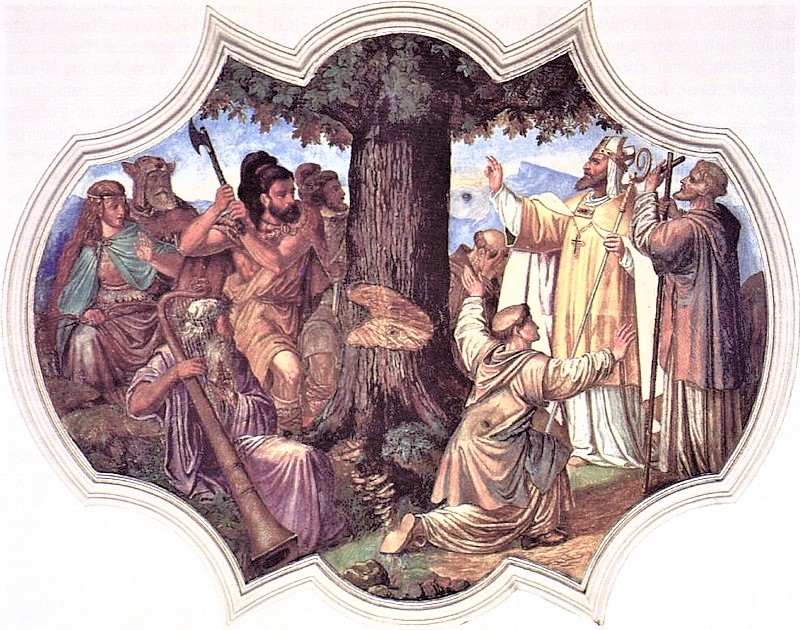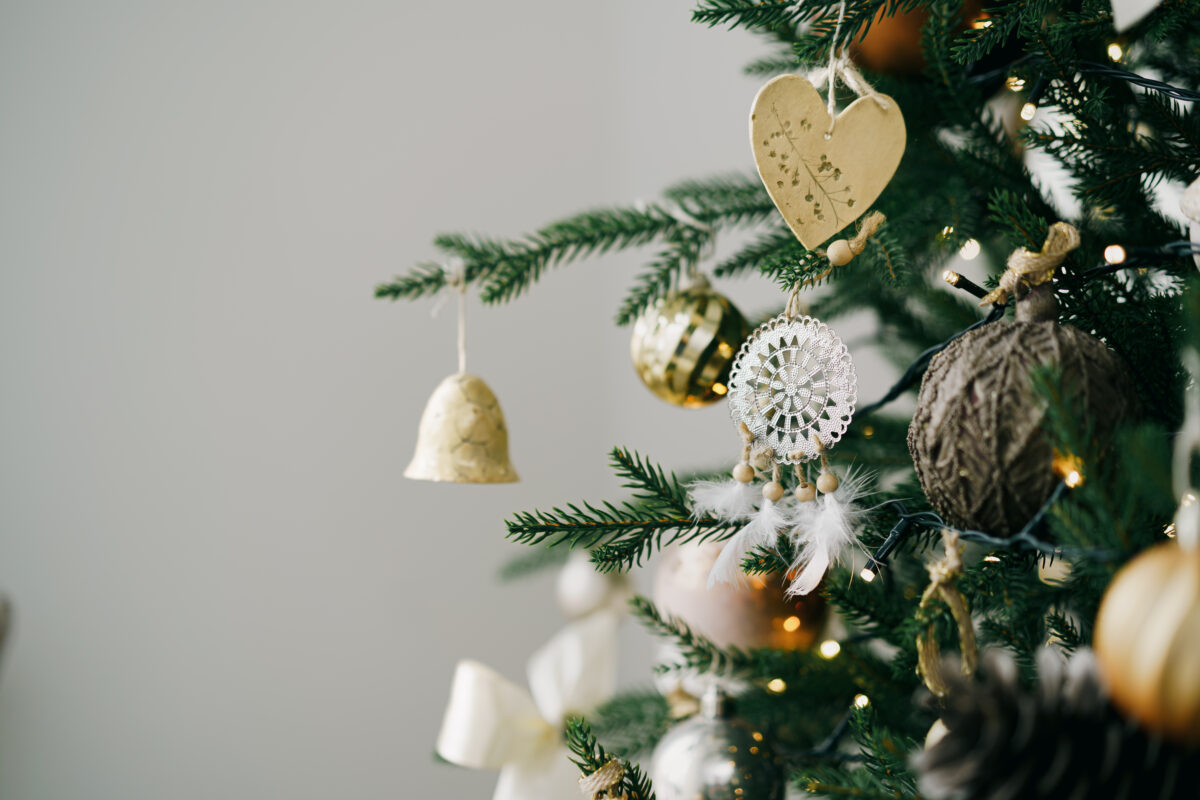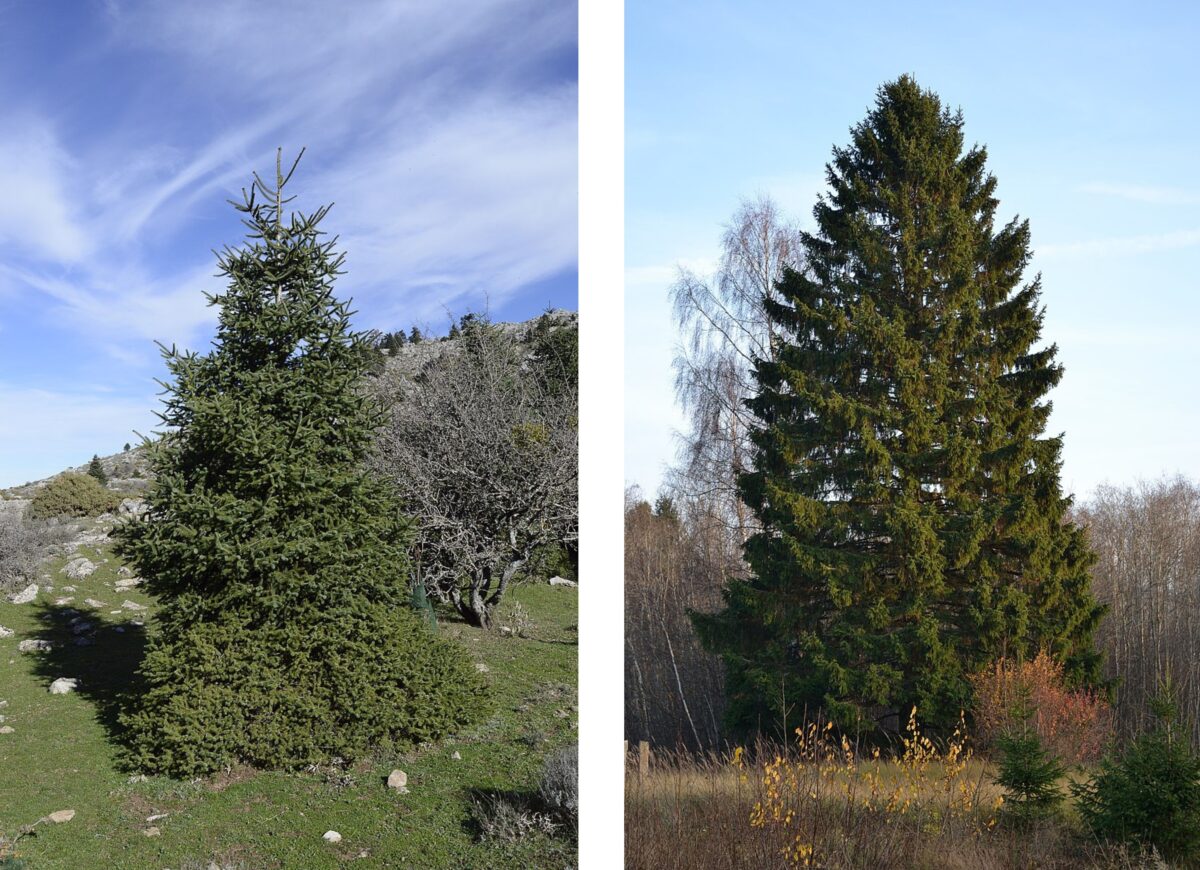Christmas trees, a tradition with a lot of history

When December arrives, every house is filled with the mythical icon of this time of year: the Christmas tree. But where does this tradition come from, has it always been like this?, does it have any meaning?, what does it symbolize?, what species are actually used? and, why did artificial ones start to be used? Along a journey through different cultures, we discover its history and understand the meaning of this well-known decorative element.
Its origin
Since time immemorial, trees have been regarded as symbols of fertility and regeneration, but the origin of Christmas trees dates back to Germany in 1605 and is closely linked to Christianity, although it is believed that it was Christianity that adopted an existing pagan tradition, as European peoples used to decorate oak trees with flowers, fruit or candles to ensure good vegetation. However, there are many legends about its origin, but one of the most famous is that of Thor’s oak.
It is said that in the region of Hesse, in 8th century Germany, there was a tradition in a pagan community to honour Thor, the god of thunder. This consisted of performing a human sacrifice during the winter solstice around a huge sacred oak tree that was known as the Thunder Oak. St. Boniface, a German blessed who was passing by preaching the word of God, came across the ritual in full swing, and outraged, in order to stop it and put an end to such an atrocity, he decided to cut down the great tree.

The villagers were perplexed by such an outcome of events, but even more so when the missionary, after reading the Gospel, placed a fir tree in its place and decorated it with apples and candles. He also pointed out that the fir tree was a tree of peace representing eternal life because its evergreen leaves were always green and because its crown pointed to heaven. From this moment on, during the Christmas holiday, fir trees began to be felled to decorate houses, and over the course of time and throughout the Middle Ages, this custom spread to America and eventually reached all corners of the world.
The arrival of lights
Two Baltic cities compete for credit for being the first to light the Christmas tree in a public square: Tallinn, the capital of Estonia, in 1441; Riga, the capital of Latvia, in 1510. In Germany it happened in 1605 and when it became a tradition, the Hanover family exported it to Britain. In Spain it took a little longer to arrive, and it was not until the 19th century when Princess Sofia Troubetzkoy, widow of a supposed half-brother of Napoleon Bonaparte, married the Spanish aristocrat José Osorio and at Christmas put up the first Christmas tree in the Alcañices Palace in Madrid.
In relation to the lights that adorn the tree, there are also some legends. The first of these attributes to Martin Luther the first time it was decorated in this way, it is believed that he was fascinated when he glimpsed the stars in the sky through the branches of a fir tree and, at Christmas, he set out to try to imitate the effect with candles. Another story surrounding the mystery of the lights tells of merchants arriving in the aforementioned Tallinn square, celebrating and dancing under the tree and finally burning it down.

However it happened, whether by firelight or starlight, trees began to be lit, first with candles and finally, thanks to Edward Johnson’s invention in 1882, with electricity. This made it much safer because with candles there were many accidental fires and insurance companies had stopped covering them. It was a breakthrough, and today few people could conceive of a Christmas without light.
Searching for meaning
The meaning of the Christmas tree also depends on numerous cultures that have coined one interpretation or another. If we focus on the most Christian, the lights symbolise the hope that the birth of Jesus brought with him, and the custom of filling the tree with gifts would come to signify that the trees provide great goods. It is also often associated with the apple tree in Paradise where Adam and Eve ended up. The ancient Western pagans, on the other hand, were accustomed to use evergreens to symbolise eternal life, worshipping and honouring them.
However, the tradition has evolved and changed, and over time, candles and apples have evolved into a variety of lights and decorations. The role of the gifts brought under the tree by Father Christmas or Santa Claus has gained special strength and the significance of the magic of what happens on the night of 24th December under the tree has also moved to a more material interpretation, but what has always been maintained is the illusion that is created under or near the branches of the tree.

The artificial tree
In Australia, the United Kingdom and the United States, people still cut down a natural tree to use it as a Christmas tree. In most places, however, artificial trees are more commonly used, thus avoiding the need to cut down the tree. The invention of these trees is attributed to a former World War II pilot named Si Spiegel, who one day, while looking in a shop window, realised that natural trees had more disadvantages than advantages and, seeing a synthetic tree behind the window, thought that the famous Christmas tree could also be replaced by an artificial one. He gave free rein to the idea, and although few people went for it, it turned out to be a success.

Perhaps without being aware of it, as the aviator sought to make amends for disadvantages such as their weight or the ease with which they get dirty, he designed a sustainable measure that avoids having to cut down these evergreen trees to use them only during the holiday, even though in many countries the tradition is still maintained. As they are reusable, they can be used year after year, thus amortising their ecological footprint and taking care of the environment in the process.
Christmas species
Evergreen trees are those whose leaves remain green all year round, and as they do not practically lose their foliage with the arrival of cold and winter, they have always been ideal for decorating at Christmas. As for their species, there are several, but they could be grouped into the conifers of firs and pines. Some of the most common are Abies pinsapo, Picea excelsa and Abies normandiana. Ilex aquifolium, better known as holly, is a very Christmas plant along with Euphorbia pulcherrima (poinsettia) and Viscum album (mistletoe).

Plants and trees are undoubtedly part of Christmas, and for many decades they have been part of considerable celebrations and festivities, being a symbol of good promises. Dusting and decorating the Christmas tree as a family during the long weekend of the Constitution (or even before) is a tradition that continues to be preserved in homes whenever the month of December arrives, and although its origin is not entirely clear due to the multitude of legends that have been traced around it, it is undoubtedly a unique moment to share and enjoy the magic that Christmas always brings with it.





